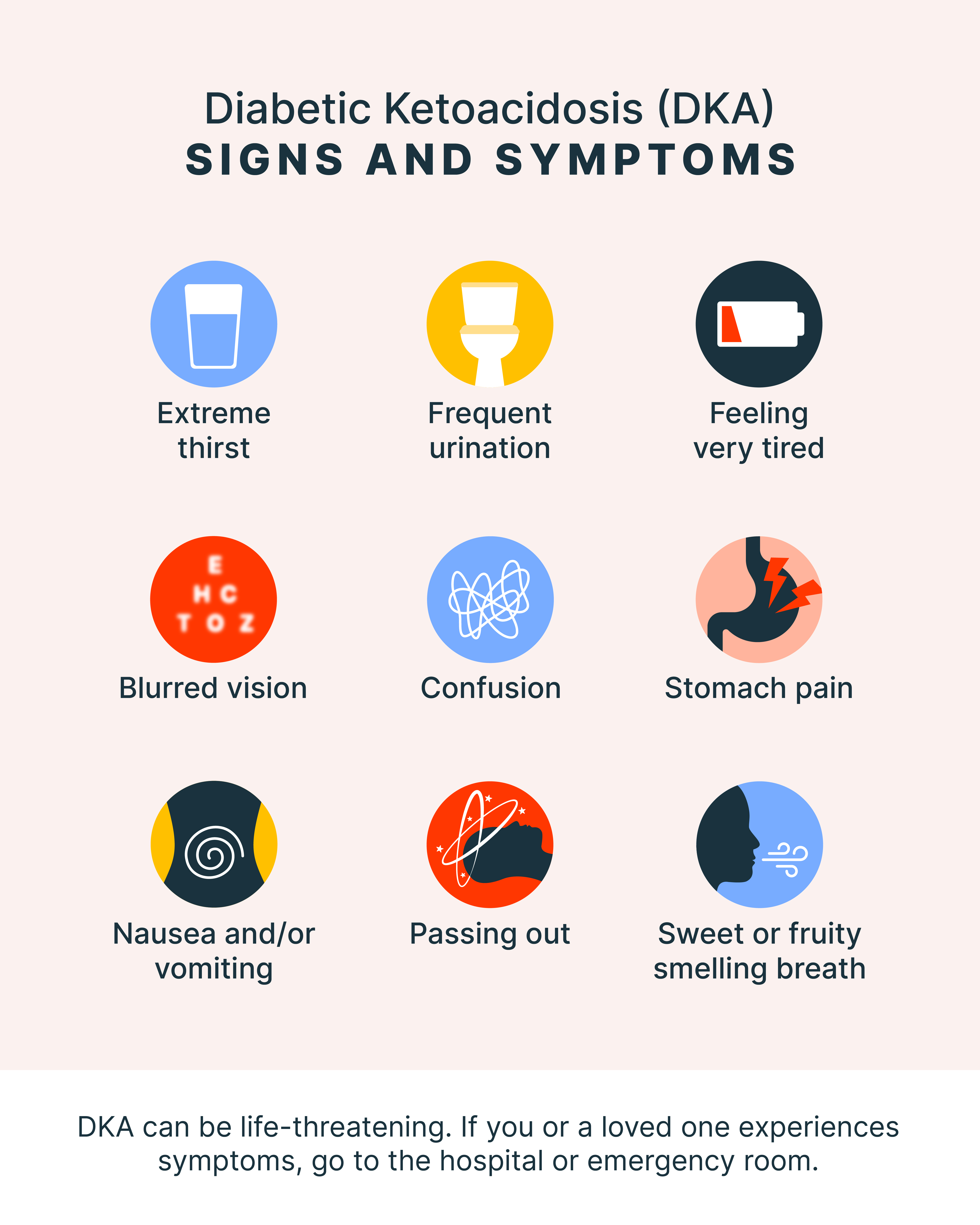Diabetic Ketoacidosis (DKA) Symptoms to Know

Diabetic ketoacidosis (DKA) is a serious condition that can be life-threatening. It can happen to people with type 1 or type 2 diabetes when they have very high blood sugar and low insulin levels.
For some people, including some children, becoming suddenly very ill with DKA can be what leads them to finding out they have diabetes.
DKA can also happen when someone with diabetes gets sick, misses insulin shots, or gets the wrong insulin dose.
What Causes DKA?
DKA happens when the body can't use blood sugar (glucose) for energy. Instead, the body starts breaking down fat for energy, which creates ketones. These ketones build up in the blood, making it too acidic. This can make a person very sick, very fast.
DKA is a serious condition that needs immediate medical treatment.
For people who have diabetes, DKA can be caused by:
- Being sick, like with a chest infection, flu, or a urinary tract infection (UTI)
- High blood sugar levels from a growth spurt or puberty
- Missing insulin doses or not taking insulin
- Problems with an insulin pump, like it not working or coming loose
- Surgery or an injury
- Having a heart attack or stroke
- Medications, such as steroids, SGLT2 inhibitors, and some chemotherapy drugs
- High blood sugar linked to their menstrual period
Sometimes, there may not be an obvious cause for DKA, which can feel confusing or scary.
DKA Signs and Symptoms
Symptoms of DKA can include:
- Feeling very thirsty
- Needing to pee more often
- Feeling tired or sleepy
- Feeling confused
- Blurred vision
- Stomach pain
- Feeling sick and/or throwing up
- Breath that smells sweet or fruity, or like nail polish remover
- Passing out
These symptoms can develop over 24 hours, but in some cases, especially for children or people using insulin pumps, they can happen much faster. If you notice any of these signs, seek medical help immediately.
What Can You Do to Prevent DKA?
Autoantibody positive: For someone who’s tested positive for type 1 diabetes autoantibodies but doesn’t have symptoms, it’s important to stay alert for any signs that might indicate the development of type 1 diabetes.
These are often referred to as the 4 Ts:
- Thirsty
- Toilet (frequent urination, possibly bed-wetting in a toilet-trained child)
- Thin (losing weight without trying)
- Tired (fatigue and lethargy)
It’s important to work with your healthcare provider to regularly track your blood glucose levels for signs of high blood sugar (hyperglycemia). You can also test your urine with ketone test strips to screen for signs of DKA.
Type 1 diabetes: People diagnosed with type 1 diabetes can lower the risk of DKA by checking blood sugar levels regularly and adjusting insulin doses based on blood sugar readings and food intake.
When you’re feeling unwell, your blood sugar levels may be higher than usual, which increases the risk of DKA. To stay safe, it’s important to work with your healthcare team to create a plan, often called “sick day rules,” to manage your diabetes when you’re sick.
Want to Read More?
Access all of Dario Connect’s content, community, and experts for free!
Already a member? Login
Want to Read More?
Access all of Dario Connect’s content, community, and experts for free!
sign UP For FreeAlready a member? Login

